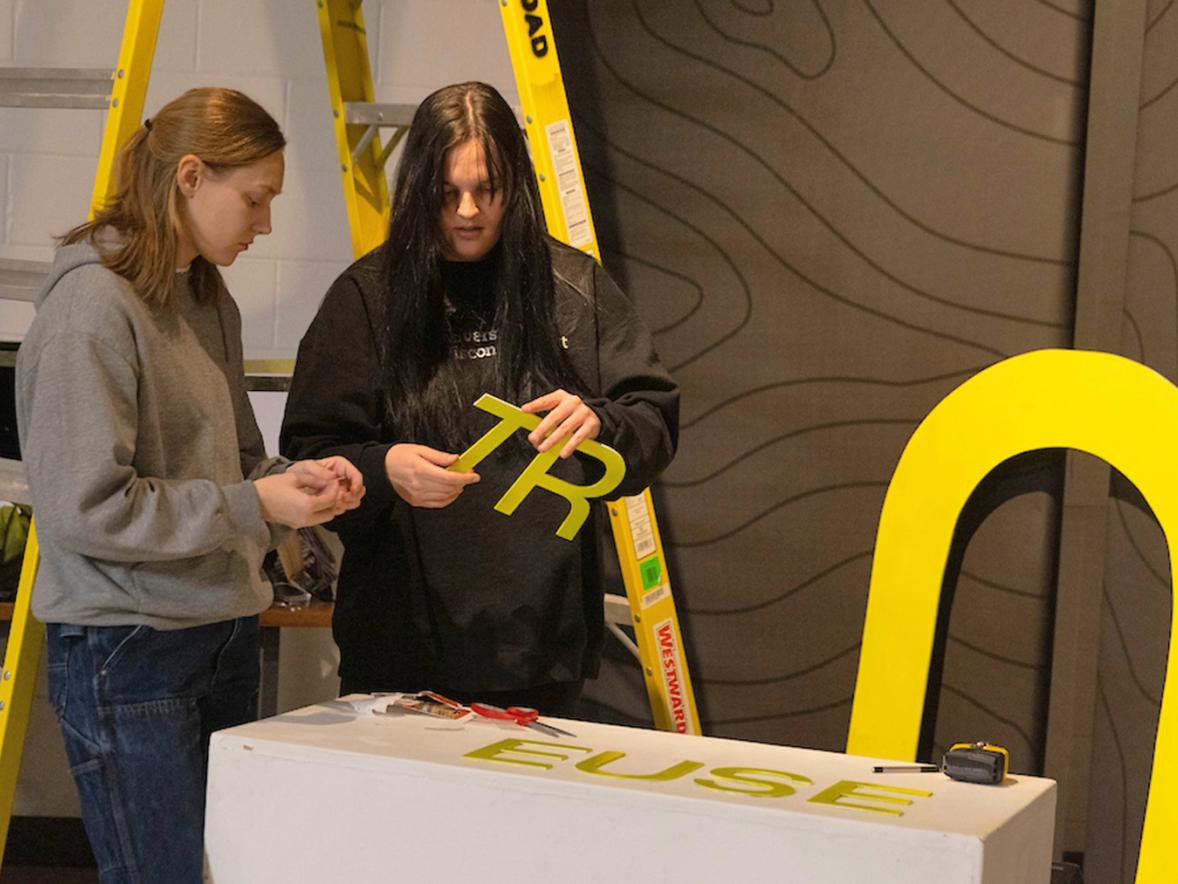When the fall semester wrapped up, University of Wisconsin-Stout students in a special interdisciplinary class did more than present final projects to their professors. They also presented to industry professionals.
Over 3½ months, six teams of packaging and graphic design students in the Great Northern Corp. Collaboration Experience course followed the company’s criteria to create new, sustainable packaging for a client, Reckitt, which makes Air Wick plug-in scented oils and diffusers.
The experience, supported by Great Northern, was led by packaging Program Director Robert Meisner and graphic design and interactive media Professor Nagesh Shinde.
“The project challenge was current and relevant. It included normal industry challenges one would expect in terms of scheduling, technology and learning curves,” Meisner said.
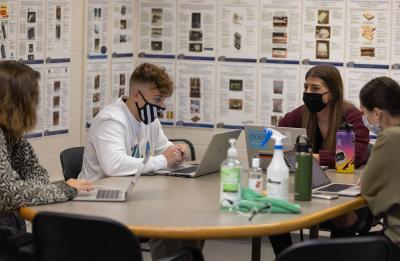
Attending the presentations were GNC structural design manager Kris Johnson and graphic design manager Sarah Murawski, who were impressed with the students’ designs while providing constructive feedback, along with eight other GNC and Reckitt representatives.
Johnson thought the teams did an excellent job “developing viable solutions, as well as delivering polished presentations,” he said.
“I was impressed with the diversity of packaging concepts developed. The efforts the students put into this project was impressive and is ultimately what made this class a success. They are leaving with an experience they can draw from throughout their career.”
Great Northern, which manufactures packaging and retail displays, has operations in five states, with locations in Appleton, Chippewa Falls and Racine. It employs more than 1,700 people nationwide, including 30 UW-Stout alumni. The company provided $100,000 in funding toward the sponsored course, to be held four times over four years.
In their research, the teams found Air Wick’s current plastic blister packaging to be nonsustainable, and in-store and e-commerce packaging need two designs. Teams also thought the packaging was not user friendly, as it was difficult to open and has no storage for the scented oil refills once opened.
Their goals were to design a single sustainable package to match Sam’s Club, Costco and Amazon packaging requirements for in-store display and online retail, while improving customer experience.
Configurability and a dual-purpose design
Three packaging design seniors – Mike Cops of Appleton; Malorie Mackie of Circle Pines, Minn.; and Elliott Nelson of Franklin – and Vaughn Vande Walle of Milwaukee, a junior in graphic design, created a package for Air Wick’s nine-pack diffuser refill to meet Costco’s requirements.
They created a sub-brand, Aroma Sanctuary, which is meant to soothe a customer’s state of mind with floral designs and fragrances.
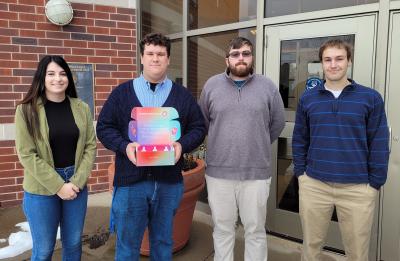
Vande Walle typically designs for alternative audiences. With this project, his team appealed to a broader market. “Making graphics for a more general audience was a tough but exciting challenge for me,” he said. “I love that the graphics are bright and eye-catching, while being an extension of myself and what my work stands for.”
Their final product reduced the use of plastic by 100%, reduced the volume of secondary packaging by 52% and reduced corrugated packaging by 34%. Their design increased the number of units per pallet from 272 to 336.
For Nelson, one of the team’s biggest successes was incorporating configurability into its design. Their final product includes an insert that can support nine refills or six refills and one diffuser.
“The existing package is a night-and-day difference to our design,” he said. “We moved away from the blister pack. Our dual-purpose design is visually pleasing, offers storage of the product after opening and is smaller in size.”
Vande Walle agrees that their design is ‘left field’ from the current market. “But I feel that’s a great way to set trends,” he said. “While the current package might have felt ground-breaking decades ago, it doesn’t have the same flare now. This cycle keeps us designers on our toes to keep innovating and creating new, eye-grabbing products for the consumer.”
He thought GNC gave his team insightful comments for its final project. “It allowed me to think in a much more professional manner, which I could continue upholding in the workforce.”
Cops, Mackie and Nelson graduated in December. Nelson began as a packaging engineer at Bio-Techne, a biomedical company in Minneapolis, at the start of January. He loved the GNC class because he feels prepared to work with different groups of people, processes and communications.
“This class, with its large-scale project, gave us a chance to show off our work,” he said.
Sustainability inspired by nature
Another group’s project was to redesign packaging for one Air Wick diffuser and nine refills. Lance Anderson, packaging, Ellsworth; Maggie Kendhammer, packaging, La Crosse; Jasmine Bussie, graphic design, Lakeville, Minn.; and Piers Rimmereide, graphic design, Carver, Minn., were inspired by natural colors, plant-based visuals and calming graphics.
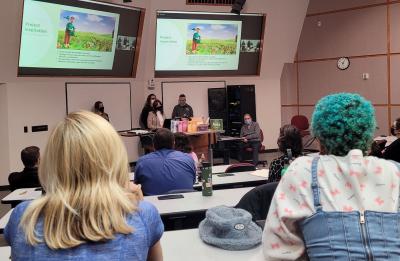
Packaging for their sub-brand, Bloom, met the critical success factors and engaged consumers with five floral scents, each with a unique branded package. They also created a seed paper included in the package for consumers to plant wildflowers.
Their final product reduced packaging weight by 60% and reduced the use of plastic by 100%. This reduced the amount of plastic per pallet by 16.09 pounds, while increasing the number of units per pallet from 270 to 280.
Anderson said an important skill the team learned was looking ahead in the design process, especially with a short timeline.
“We didn’t have time to backtrack or address problems,” he said. “The tight timeline forced us to think ahead and confirm that our ideas would be sufficient for the next steps of our design process.”

The team thought the biggest benefit of this class was being able to work on an industry project that encompassed both packaging and graphic design.
“Having experienced professors from both majors, along with the personnel from Reckitt and GNC, really made for a massive amount of resources to learn about careers in both fields and to see how they intermingle and depend on each other throughout the design process,” Anderson said.
Anderson and Kendhammer graduated in December. Both were hired before graduation. Anderson is a packaging engineer with the sustainability group at Boston Scientific, a medical device company. Kendhammer is a packaging engineer for Scott Towels at Kimberly-Clark, a consumer goods company in Neenah.
Real-world branding and packaging needs
The students' final packaging designs were printed at GNC. But because of COVID, touring the GNC facility in Chippewa Falls was not possible.
Meisner and Shinde are looking forward to a new project and new challenge for the next set of 20 students. “Nagesh and I are also excited to be working with Kris Johnson and Sarah Murawski again, as their feedback and support were a huge factor in this semester being a huge success,” Meisner said.
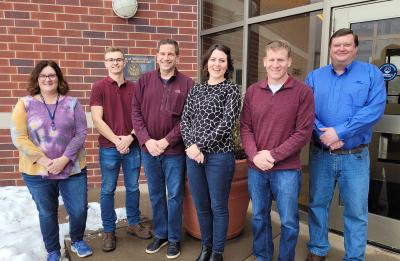
Along with Johnson and Murawski, GNC’s Vice President of Sales Development Brian Mumau, GNC’s Account Manager for Reckitt Greg Cieri and Reckitt’s Packaging Engineering Manager Ben Sadler identified the project for the class and shared feedback on the final presentations.
Johnson and Murawski think the course exceeded GNC’s expectations, as the students worked together to develop a sustainable solution to a real-world packaging challenge.
“I personally learned so much and was really energized by the student’s work,” Murawski said. “I have a better understanding of the design process Nagesh and Robert use with the students. I believe our future projects can capitalize on the strengths of this process.”
Mumau and Cieri enjoyed watching the teams’ projects evolve after each phase and how GNC’s feedback guided the teams into alternate solutions. They have worked with GNC and Reckitt for more than 20 years and have been challenged with the same project scope a number of times.
Although the scenario has never been solved before, Mumau thinks the students proposed “elements that Reckitt could latch on to, especially related to materials structure and packaging. The true test would be in the cost feasibility studies to see how they all shake out versus the current package,” he said.
Cieri and Sadler agreed. “The best part about the course was observing and appreciating the journey the students took as they went from early concepts to final designs,” Sadler said.
“The depth to which the students took the assignment was amazing. I believe that Reckitt has a lot to chew on that very well could become real-world as they access their branding and packaging needs for Air Wick going forward,” Cieri added.
UW-Stout’s FOCUS2030 strategic plan includes a goal to provide students access to innovative programs and collaborative partnerships that support the development of interdisciplinary knowledge and skills.





